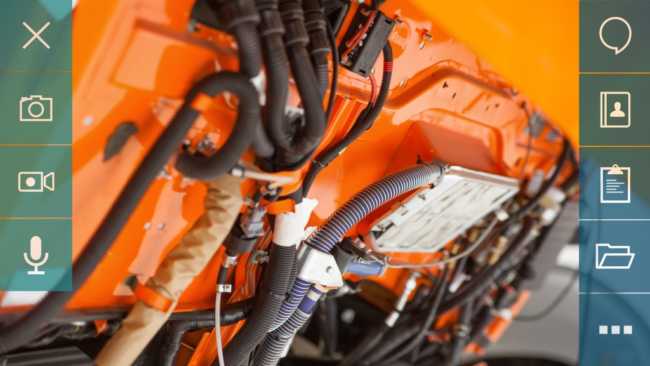Augmented Reality in the Transportation and Logistics Sector: Part 4
This is the fourth installment of a five-part series covering the impact of Augmented Reality on the transportation and logistics industry.
In the previous parts of this series, we looked at the critical business issues facing many parts of the Transportation and Logistics sector, challenges in specific areas of the sector (such as the trucking industry) and why Augmented Reality might be the solution to meeting some of those challenges.
Now we’re going to take a look at best practices for planning and implementing an AR solution. To do this, it’s important to recognize that this is a journey – and one that can offer transformational change for your company. AR can help rewrite the way you think about getting work done – and it broad applicability across the Transportation and Logistics sector.
Whether you are in logistics services, air and express delivery services (EDS), freight rail, maritime transportation (including carriers, seaports, terminals, and labor involved in the movement of cargo and passengers by water) or trucking, AR solutions offer the potential to fundamentally improve what you offer – and the speed with which you can respond to change. Take a look at the future transportation challenges.
Here are a few strategies that can help ensure the success of your experience with AR:
- Know that it is a journey – which will start with demonstrations from AR companies and your own internal evaluations of what each of them has to offer. From there, you might move to a proof of concept (to ensure that it can work in your business), a trial in an internal lab, a field trial and then an “early adopter” deployment. You’ll learn from each of those steps and bring everything you’ve learned to the eventual design and deployment of your solution.
- Get someone to adopt and sponsor the project on the business side of the company – You don’t want AR to be simply an investigation by the IT department. Operations, for example, can be a great business owner for this kind of project. Maintenance can also be a logical home for the project. But ideally, ownership of an AR project should rest with a business element of your organization – so that true buy-in of the return on investment (ROI) measurements you’ll put in place for the project can happen in an effective way.
- Involve the teams who will use AR on the front line – Field services, for example, is the perfect group from whom you need to get feedback and suggestions about any AR implementation. All those groups will listen because they have the kinds of pain points that AR can potentially relieve.
One other key thought is that you will get the most from an AR solution when you “think big” about the kinds of business problems you want to tackle. While you may begin with a modest proof of concept, ideally you want that PoC to be in service of a much broader vision about where you think AR might be able to take your business.
AR solutions provide the most benefit when they are used to help tackle large, meaningful business problems.
Upcoming: in the fifth and final part of our five-part series, we’ll look at the importance of getting and using the data you get from your AR solution to iterate and improve on the benefits it offers – building a virtuous cycle of continual learning and improvement (as well as broader enterprise integration with existing operating systems, tools, management and AI solutions).
Originally this article was published here.
 This article was written by Geof Wheelwright, a technology journalist for more than 25 years (including work for The Times of London, the Financial Times, Newsweek, Time Magazine, The Guardian and trade publications such as Computerworld and Geekwire) and is now the Director of Marketing Communications for Mountain View, California-based Atheer, Inc.
This article was written by Geof Wheelwright, a technology journalist for more than 25 years (including work for The Times of London, the Financial Times, Newsweek, Time Magazine, The Guardian and trade publications such as Computerworld and Geekwire) and is now the Director of Marketing Communications for Mountain View, California-based Atheer, Inc.




